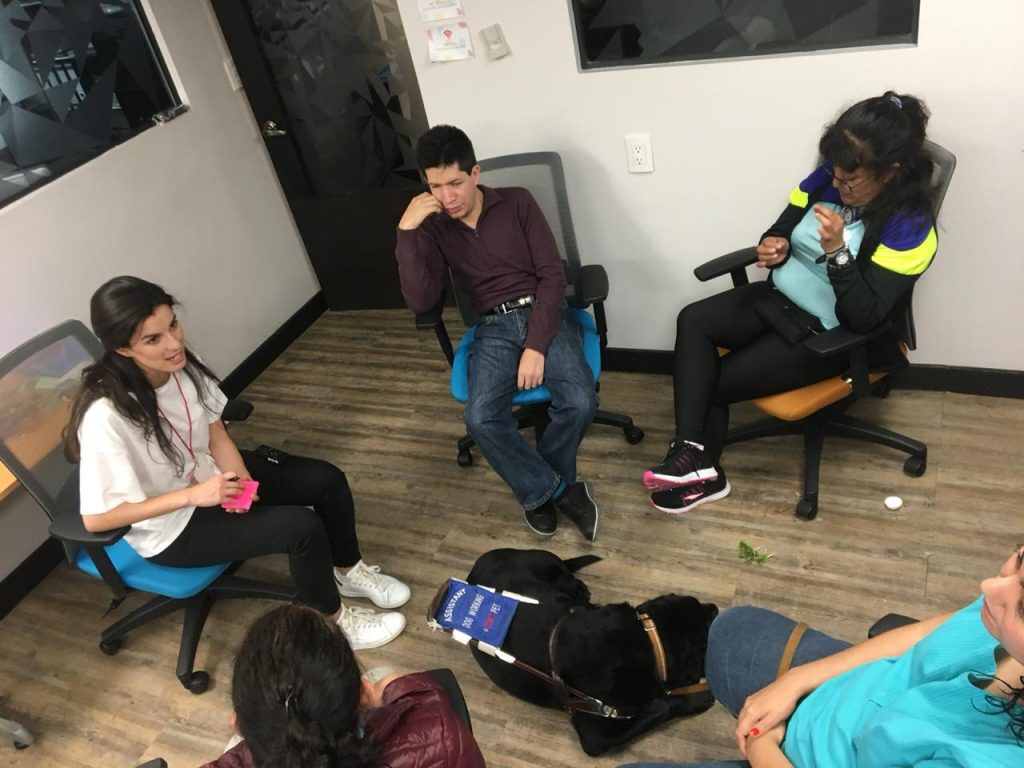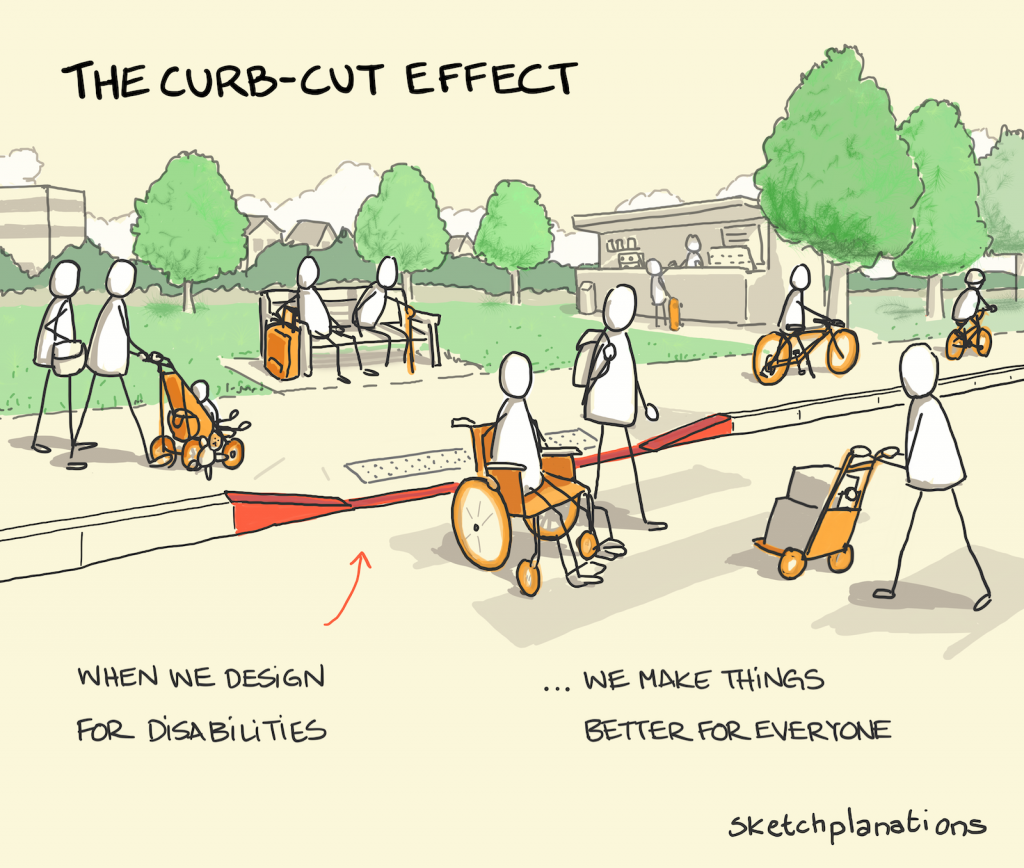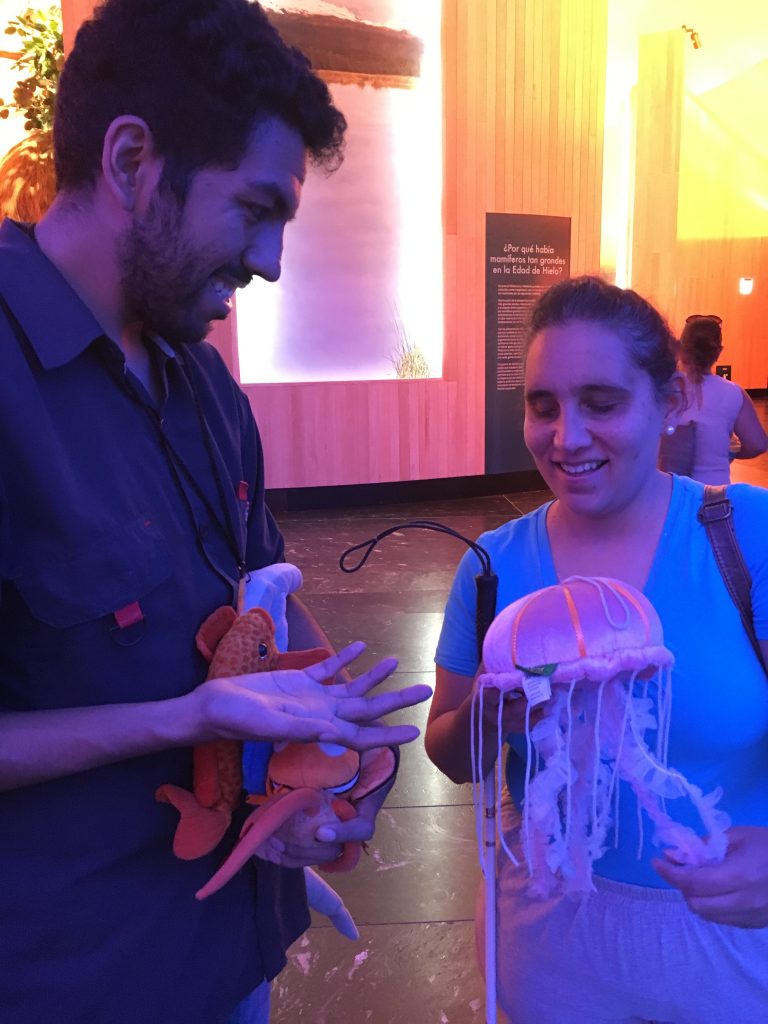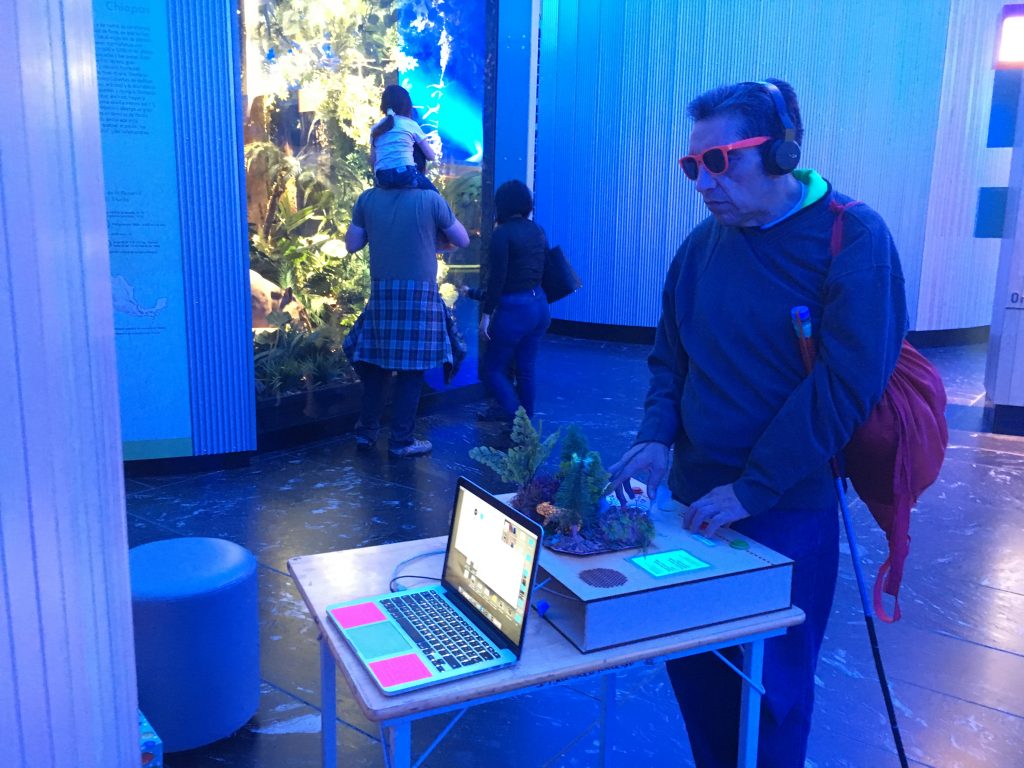Regina and Alejandra, based in Mexico City, are sisters, best friends, and partners at the first Inclusive Design firm in Mexico. Both of their background stories converged into what drives their work today at Openn.
Openn is an Inclusive Design consultancy that uses people-centered design methodologies with an inclusive perspective and creates design products, services, interactions, and strategies for everyone (no exceptions).
Regina is a pedagogist specialized in instructional design, obsessed with creating engaging learning experiences for many years. She has constantly been confronted with how differently we all learn, and how children interact with information in a unique way — even if they come from similar backgrounds, have the same age, and share the same interests.

Alejandra is a people-centered and strategic designer whose purpose is to craft interactions that make people’s lives easier and more pleasant. When it comes to UX design, she is curious about exploring different possibilities and scenarios. By being this way, she’s discovered that the more she advances in the design process, the more scenarios she didn’t contemplate before emerge. Throughout her career, she’s indeed found that every person is different and uses products under different circumstances.
Regina and Alejandra’s takes on design in relation to learning
R: the current educational systems are rigid; they have rules, grading practices, levels, and demanding expectations based on the average student’s performance. Students are measured based on these rigid criteria, which makes many of them struggle to fit into what the system demands of them. I believe that there is a huge opportunity for designers in the education field to design new learning experiences that adapt to everyone and help each individual recognize their talents, learning styles and skills in order to acquire significant and useful knowledge. Differences can actually benefit learners. Through Inclusive Design, in fact, designers have the opportunity to craft learning experiences everyone can enjoy.
A: I noticed that the common barriers in UX design are that many products are “stiff”; users are constantly being forced to adapt to the product, vs. the product adapting to the user. Inclusive Design helped me realize that the best designs are flexible, as they adapt to each person’s needs and abilities, making it easy for the individual to use it whichever way they want to, and taking into account each individual’s characteristics. It’s a huge challenge, but it sure leads to truly innovative, amazing, and disruptive results!
Designing for the extremes

R&A: At Openn we focus on designing for what we call the “extreme cases.” You might be wondering what this means; think of it as the worst-case scenario whenever you’re working on a project and you’re planning ahead on how your design is going to work in a specific context. It’s always smart to think of the worst-case scenario and ask yourself, “what would be the worst thing that could happen?”. If your project is ready for the worst-case scenario, you will be ready for everything that can go wrong, and therefore be successful.
Inclusive Design works in a similar way, but it doesn’t just survive the worst-case scenario, it becomes an even better design, by taking advantage of the extreme circumstances a user can face.
And how do we do this? We think about all the different people that would want or could use our design, and from that diverse group of people, we identify those individuals who have more specific and challenging needs.
As designers, we commonly (but also wrongly) think we should design for the majority of users, or the average user. However, that way of thinking usually leaves certain individuals out of the scope and overtime, they are not only excluded but marginalized from our design.
The key is to choose to design for the extreme cases, for those individuals who present more differences, for the outliers, and for the ones almost no one considers. If we create and solve for them, a greater range of users will be able to be part of our design and will have a better experience. We call this “the curb cut effect”: a curve cut might have originally been installed for wheelchair users, but many other people ended up benefiting from it: strollers, skaters, the elderly, small children, luggage, and so forth.

Putting Inclusive Design into practice
R&A: One of our favorite projects was putting up a more inclusive museum exhibition in Mexico City. The usual approach is checking for accessibility compliance: ramps, lifts, wide corridors, heights, braille, and sign language… But as important as it is for architects and engineers to consider these guidelines, we believe it’s not enough. The experience of an exhibition is defined by the way the content is displayed and the interactions people use to navigate the room and enjoy the experience. These aspects are the responsibility of scenographers, interaction designers, curators, etc. We believe museums should think about this type of inclusivity, and not just about architectural requirements.
in Mexico City, by Openn
Our approach was to think of all the different people who would like to enjoy the museum’s experience. And the answer was: everyone! Then, we identified the cases that currently have more barriers to enjoying the exhibition by observing a diverse group interacting with the museum. We then realized that many groups faced some barriers but could still be part of the experience: wheelchair users, cane users, hearing-aid users, people with intellectual disabilities, people with mobility disabilities, the elderly, illiterate people, people who don’t speak Spanish, etc. But the group with the largest and most significant barriers were people with visual impairments because everything at the exhibition was designed to be enjoyed only through sight, which made it pointless for them to visit the museum.

So we decided to work with people who have different visual impairments (extreme cases). We applied the Inclusive Design methodology and co-designed an exhibit that translated the current exhibitions to other senses. In other words, we re-designed an exhibit incorporating new interactions that were usable for people with visual impairments, but were also usable for all kinds of visitors. As we tested the new exhibit, we realized all visitors preferred to interact with our prototype because they were more engaged when touching, hearing, smelling, and not just seeing the exhibit. Our design was better for all visitors, not only for the visually impaired. So, designing keeping in mind the extreme cases lead us to a better exhibit design: a multi-sensory diorama that everyone could experience.

Neverending extreme cases
R&A: In reality, there isn’t only one extreme case. There are many, and in fact, new extreme cases will emerge during the design process. It’s a never-ending story because design and inclusion are never-ending challenges! Products and services should be improving and evolving permanently. Inclusion isn’t perfect, and it won’t take just one single attempt. Including an extreme case has an immense effect, and we have to at least try to include new individuals in the experience so that our design keeps getting better and better.
When we tested our prototype, we realized there were elements that needed to be modified: the height of the exhibit had to be adjustable. A height that was suitable for children and wheelchair users was not for tall individuals who had to bend too far to reach the buttons. We also discovered that it was easier for visitors to touch one element at a time, having enough space to interact with each segment, because when the museum got crowded, people would bump into each other when exploring the exhibit.
We were able to fix most of these problems for the final design, however, we knew that other problems would arise and that the design wasn’t perfect. Over time there will be new use cases we’ll need to identify and new individuals to include, but that’s OK, since the key is to know, to be aware. Design is no good if it cannot evolve and improve.

Sustainable design means adaptable solutions
R&A: We are facing sustainability challenges. It’s true, we need to design for a sustainable future, but that doesn’t apply only to the environment. Sustainable design also means to design for the new challenges that we, as humans, are facing; we are evolving, living longer, aging, and constantly changing. Design should accomplish adaptability as a core feature; it should be flexible, customizable, and it should be able to change and evolve with us. If we succeed, design will accommodate the diversity of human beings and therefore be continuously more inclusive.
Designing for the extremes does not require more steps, more investment, or more time. It only requires consciousness and commitment to design for our real and diverse society. It’s also a very interesting challenge and so much fun! We firmly believe all design should be inclusive, as it’s the true source of innovation. With your help, we can find new ways to make design more flexible, multi-sensory, enjoyable, and inclusive for all of us. So please follow us and help us give it a try!
You can follow Regina and Alejandra’s work on Instagram, and LinkedIn.




